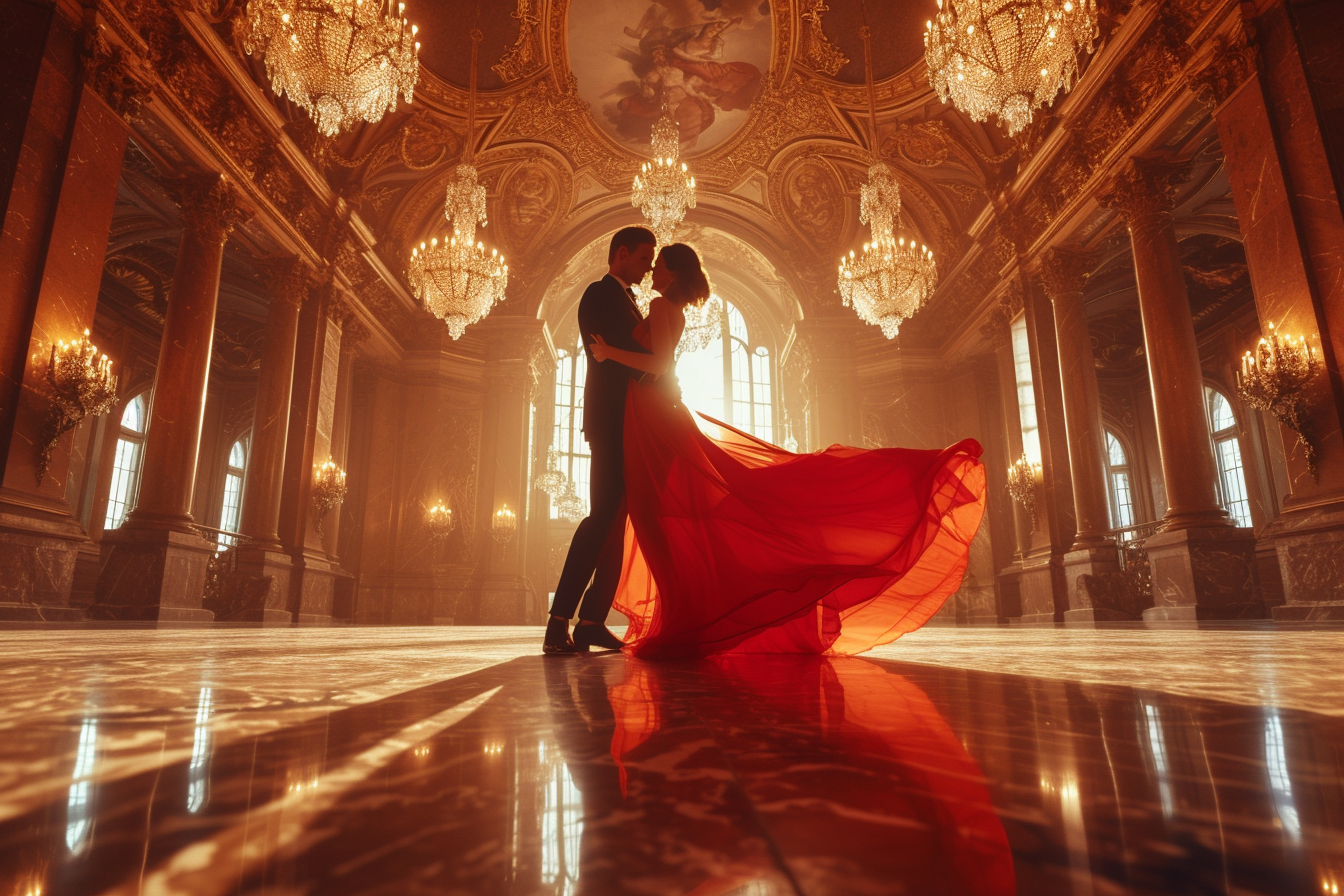Ballroom dancing emanates an air of elegance and sophistication, captivating audiences and dancers alike with its blend of rhythmic movements and expressive postures. Whether a seasoned dancer or a newcomer to the ballroom floor, this comprehensive guide will take you through the swirling world of ballroom dancing, covering its diverse styles, essential steps, and the decorum that sets the tone for this ceremonial form of dance.
Understanding ballroom dancing styles
Ballroom dancing is often categorized into two main groups: the Standard/International Ballroom and the Latin/American Rhythm. Each style has distinctive characteristics and dances that define its essence and flair.
Standard/International ballroom
Waltz: Recognizable by its fluid, sweeping turns, the waltz is performed in 3/4 time. The dancer’s posture is upright with a closed position, and the steps flow in a graceful, continuous movement.
Foxtrot: This dance is characterized by long, smooth steps, and it is danced with a combination of slow and quick steps, exuding an effortless and sophisticated glide across the dance floor.
Tango: Originating from Argentina, the tango is a dramatic dance emphasized by sharp, staccato movements and a strong connection between partners, with a characteristic hold that is closer and more personal.
Viennese Waltz: A faster version of the waltz, the Viennese waltz requires stamina and precision, with rapid swirling around the dance floor and a constant whirling motion that is both challenging and exhilarating.
Quickstep: A spirited and lively dance, the quickstep is danced with quick, light steps, often including hops, runs, and syncopated rhythms that require agility and buoyancy from the dancers.
Latin/American rhythm
Chacha: The chacha is marked by its playful, lively nature and staccato movements. It is a flirtatious dance with a steady beat that is easy to recognize.
Rumba: This dance emphasizes sensuality and hip movements, known as “Cuban motion.” Rumba is a narrative dance where the partners portray a story of love and passion.
Samba: With its roots in Brazil, the samba is a joyful rhythm that encompasses a bounce action and rolling hip movements, embodying the carnival atmosphere.
Paso Doble: This dance is theatrical in nature, representing the drama of the Spanish bullfight. The lead takes on the character of the matador, with strong, marching steps and dramatic poses.
Jive: A variation of the Jitterbug, the jive is a lively and uninhibited dance. It features a lot of kicks, flicks, and turns, favoring speed and energy over smoothness.
Mastering ballroom dance steps
Basic Steps: Each dance has its own set of basic steps that form the foundation of the dance. Mastery of these steps is essential for advancing to more complex patterns.
Posture: Maintaining the right posture is crucial. Stand tall, pull in the abdomen, keep the shoulders down, and hold the head high. This position enables better balance and aesthetics.
Lead and Follow: In ballroom dancing, one partner leads and the other follows. The lead must communicate the steps and direction clearly, while the follow must respond sensitively to these signals.
Footwork: Proper footwork is vital for the execution of smooth dance steps. Ballroom dancing frequently uses heel leads (moving forward starting with the heel first) and toe releases (releasing the toe at the end of a step for smooth transitions).
Timing: Every dance has a distinctive timing that corresponds to the music’s rhythm. Pay close attention to the musical beats to ensure that your steps are synchronized.
Pattern Variations: After grasping the basic steps, dancers often learn variations and more advanced patterns to add flair and personal style to their dancing.
Appreciating ballroom dance etiquette
Dress Code: Wear attire that reflects the formality of the event. In competitions and formal gatherings, there are specific dress codes, but in social settings, comfort and the ability to move freely are key.
Inviting a Dance: Traditionally, men invite women to dance, but modern etiquette allows for anyone to extend an invitation. Politely ask, “Would you like to dance?” and wait for a response.
Navigating the Dance Floor: Respect others on the dance floor. Dance in the line of direction—counter-clockwise—and be mindful of your surrounding space to avoid collisions.
Handling Mistakes: If you make a mistake, continue dancing. Do not stop or apologize profusely. A smile can smooth over any missteps.
Thanking Your Partner: Always thank your partner at the end of a dance. It is a sign of respect and gratitude, regardless of the skill level or performance.
By acknowledging the different styles, mastering the foundational steps, and adhering to the etiquette of ballroom dancing, enthusiasts can immerse themselves in the rich tradition of this graceful art form.
Embrace the challenge of each intricate step, the joy of moving in harmony with the music, and the satisfaction of a well-executed dance. As you advance in skill and confidence, remember the underlying ethos of ballroom dancing: connection. It is the profound synergy between partners, the music, and the audience that truly brings the ballroom to life.
Whether you are whisking across the floor in a romantic waltz, channeling passion through a fiery samba, or floating through the elegant movements of the foxtrot, ballroom dancing remains a timeless celebration of poise, partnership, and rhythm. Revel in the beauty of the dance, and let the magic of ballroom elevate your spirit and grace.







Leave a Reply